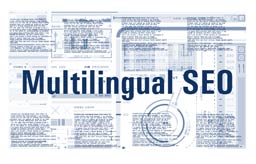Top Tips for Successful Multilingual SEO
You built a very attractive website for your services, now what? Is that enough?
Search Engine Optimization (SEO) is neither an option nor a luxury for websites. SEO is an absolutely essential step that every website needs before going “live.” SEO is even more critical when you have websites in multiple languages. Multilingual websites can thrive or fail based on how well they are optimized for SEO in their global, target language markets.

Although your translation company may have mastered best practices for multilingual SEO, you will need a sound strategy for SEO in your source and target languages. SEO is a key component in your overall Global SEO strategy.
The internet is filled with millions of web pages and great websites that provide useful information and interesting experiences for online users to navigate. In the recent past, many digital marketers spent a lot of money on “User Experience” and copywriting to drive users to their web pages but neglected to spend very much effort on SEO. Successful multilingual SEO starts with good content in your source language.
Don’t search for the perfect SEO recipe
There is no perfect recipe for SEO analysis. It will always be a unique experience, based on the website, the market, the brand, the competitors and the problems being worked on, as well as the technology in question. Therefore, instead of thinking of every possible component that could be a factor for SEO, think of the top factors that will have the greatest impact for your website in all target as well as source languages.
Top factors to achieve success with Multilingual SEO
- URL structure: think of your website structure and URLs as the map for search engines to find every single piece of content you host on your website. The URLs represent the primary value for SEO. Represent your URLs in the most direct and accessible way possible. Every URL should be visible and search engine-friendly.
- Website Crawl: This includes ensuring that URLs are structured cleanly. It is even more important to ensure that your website is accessible for website crawl without overuse of JavaScript, AJAX, Flash, and other barriers.
- Loading Speed: Website performance is especially important because search engines value the viewers’ time and like fast websites.
- Website Navigation: Crawl paths are the important pathways given to search engines. Do you have smart navigation placed on your websites? Do you have Google sitemap? Bing sitemap? This is a very important consideration.
- Content: Always focus on refreshing and updating your website content. Search engines place high value on relevant and updated content. Display your blog and news feeds on your home page to keep it auto-updated.
- Meta data: Meta data is now an important part of technical SEO, with the rise of rel=canonical.
- Robots.txt: It’s important to consider what robot exclusion is taking place on a site with Meta robots and robots.txt best practices.
- HTML is still the King: Your website content needs to always be indexed. The best route to success with that is providing accessible content in ways that search engines demand. If you use flash and interactive content (which will not be indexed) you can always limit it to just embedded components working side-by-side with indexed text content. You may try HTML5 as well.
- Title: At GPI, we have determined that <Title> tags are one of the strongest factors when it comes to on-page optimization. Title tags will show as the header for your indexed page on the result page. So it is not only about the keywords you index in that title, it is also the first thing the user sees to help him make a decision about visiting your link or not. Use a combination of copywriting and search engine optimization for each title you have on your website. Naturally, this combination will be critical for multilingual SEO on your target-language websites, where your translation company can provide assistance.
- Backlinks: Although a great deal of time and effort are required, we believe that companies should invest time and money in building backlinks for their websites. After a great deal of investigation with a lot of auto submission software and tools, GPI still believes that organic search and “white hat” techniques are the most effective way to build backlinks.
- Google Analytics: Analyze your website traffic resources and top content. Monitor your statistics and visitors. By charting successful campaigns and trends, you can carry your success into more portions of your website. SEO cannot succeed without constant monitoring and analysis.
SEO rewards are worth the effort
Focusing on these top factors in SEO, over time you will achieve measurable success. Although you will probably not reach your goals “over night,” effective SEO will have a demonstrable effect on your website visits and revenues. This is multiplied by the number of target language websites you may have, with which your translation company can provide assistance. With the world as your market, you want to ensure that your website content is attracting all potential customers in the language they can best understand.
Further resources on Multilingual SEO and SEM:
GPI’s SEO and localization team will conduct your multilingual keyword analysis, ranging from terminology accuracy equivalents to keyword density factor evaluation and competition analysis. GPI also offers Global Search Engine Optimization Services and many other translation services.
